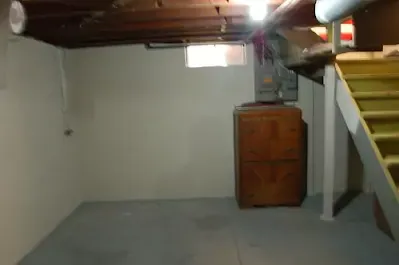Basement waterproofing
Moisture
or wetness problems are prevalent all over the areas or where basement
facilities are placed in homes. They are observed as one of the single major
factors limiting the useful service life of a building. Wet basements are the
nearly all-frequent complaint of homeowners.
A
lot of basement has moisture leakage and many experience mold and fungus growth
because of an elevated level of moisture. Finding the cause of the problem is indispensable
to its cure. However trying to find the source can be intimidating we hope the
following ideas, guidelines, and tips will be helpful and useful as well.
Identify and discover the cause of Moisture:
After
a heavy rain, if there is standing water in your basement, it has to be
expected from a leak in the foundation. If you have water stains on the
ceiling, you mainly possibly have a burst water pipe. If you can’t identify
where the moisture is coming from, whether it’s leaking in from the outside or
condensing inside, tape a twelve-inch square of aluminum foil to a wall that is
prone to wetness, sealing all four sides to make the surface behind the foil
airtight. In a day or two, if the side of the foil that was against the wall is
wet, the difficulty is leakage. If the outside is damp, it is condensation.
Take Preventative Steps:
Lawns
that are flat or slope toward your residence attract surface water to deplete
down against the basement walls allowing water to enter through the cracks and
pores causing wet spots on the walls. Confirm the ground around your home
slopes away from the foundation - about one inch per foot. Make bigger the
slope for as a minimum of ten feet.
If
this is not possible then surface drainage should be intercepting and
redirected some distance from the house. Defective, blocked, otherwise
nonexistent gutters and downspouts allow rainwater to form puddles as well as
wet soil beside basement walls. Install gutters and downspouts where required
and keep them clean of garbage. Spend a few cash in a gutter spade; the
excellent innovation since sliced bread and designed to slide along the gutter
and scoop away waste.
Alternatively,
for a maintenance-free gutter, install gutter toppers, screening, or a
basket-shaped wire strainer over the downspout outlet. To prevent high
concentrations of water forming at the point of discharge, use a concrete
gutter or splash block to carry the water away at a slope of one inch per foot.
Using of Pump:
If
you have a sump pump, check it is working properly. If you find condensation,
or sweating, on cool surfaces in the basement for instance walls, floors, and
water pipes, you should insulate the water pipes. Do not close your sub-area
vents during the winter because you think it will keep your home warmer.
The
purpose of foundation vents is not to adjust the energy efficiency of your
home. It is to prevent humidity caused by ground moisture from condensing on
the structure and decaying the wood framing. Open vents are additionally
significant in the cold weather than in the summer, though open vents should be
maintained at all times despite the season.
To
decrease indoor humidity use ventilation fans in kitchens and baths to control
moisture. Make sure the fans are venting directly outside. Check your clothes
dryer is being vented outside. Make sure the vent channel and make sure it’s
attached firmly to the dryer. Clean the vent duct as a minimum annually.
Prevention for Future Moisture Problems:
Install
a pump where gravity drainage is not possible or impaired. Pumps are used to
raise the water to a level where it can be carried off through a drain line.
Apply waterproofing compounds to the interior walls. Remember, interior wall
treatment will not work if the foremost exterior water conditions still exist.
Exterior
insertion of waterproofing substances into the space between the soil and the
basement wall. The substance swells to numerous times its dry volume when it is
put into slurry form. The slurry will tend to penetrate and plug cracks where
water might as well find a path to the basement interior, as a result reducing
the flow of water.
Excavation:
Sometimes it is extremely essential to take the extreme measure of exposing the
basement walls, treating them, and then re-grading the soil.








0 Comments
Dear Visitors: Please do not enter any spam link in the comment box. Thank you!